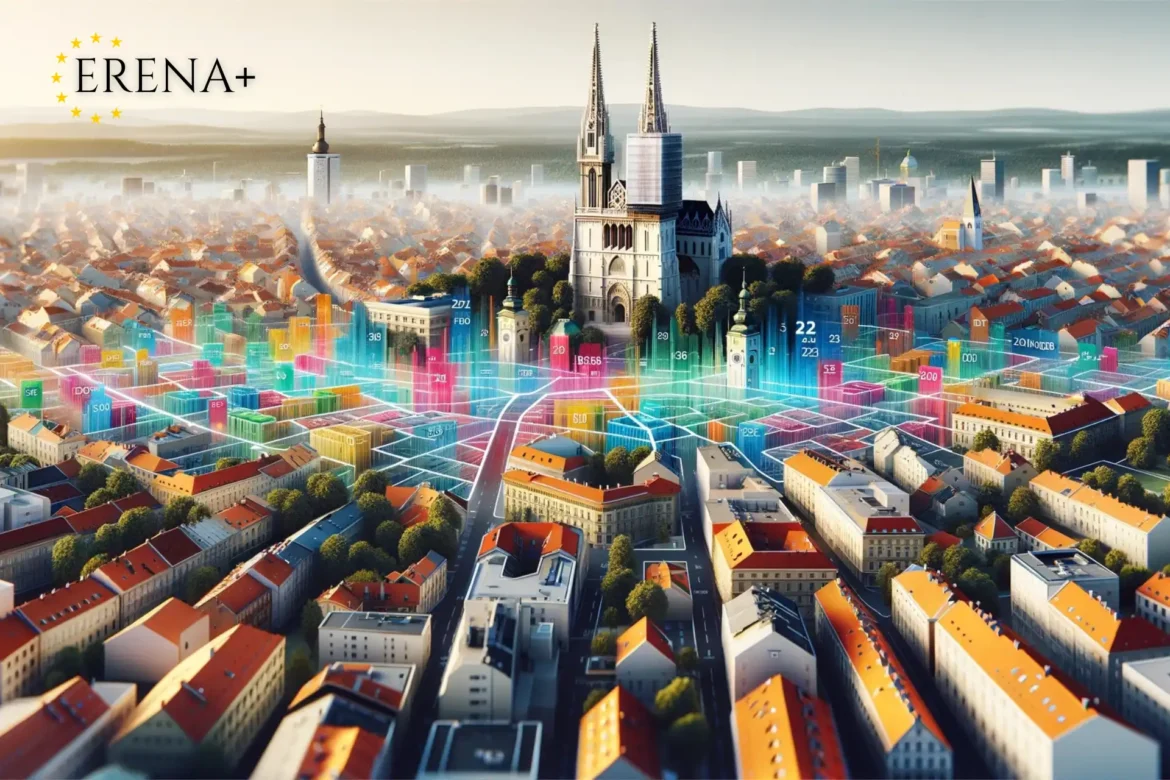Zagreb, the capital of Croatia, remains a key cultural, educational, and economic center of the country. The city’s real estate market is expanding, attracting interest from both local residents and foreign investors. In 2024, apartment prices in Zagreb continue to vary significantly depending on the district, its infrastructure, and proximity to popular locations. This article provides a detailed overview of property prices in Zagreb, taking into account key factors influencing the market.
1. City Center (Donji Grad)
The central district of Zagreb, known as Donji Grad, is the administrative and cultural heart of the city. It is home to numerous museums, theaters, and government institutions. The high popularity of the area makes it one of the most expensive locations for property purchases.
• Price per square meter: In 2024, prices range from €4,000 to €5,500 per square meter, depending on the condition and location of the building.
• Types of properties: The area is dominated by historic buildings with unique architecture, but modern residential complexes are also available.
• Advantages: Excellent transport accessibility, well-developed social infrastructure, and cultural diversity.
• Disadvantages: Limited parking spaces and high building density.
2. Upper Town and Šalata (Gornji Grad – Medveščak)
The historic district of Upper Town (Gornji Grad) attracts tourists and residents with its narrow streets and iconic landmarks, while Šalata is renowned for its green areas and prestigious residential quarters.
• Price per square meter: From €3,500 to €5,000.
• Types of properties: Apartments in historic buildings and modern villas.
• Advantages: Unique historic atmosphere, proximity to the city center, and abundant green spaces.
• Disadvantages: High maintenance costs and limited availability of modern developments.
3. Trnje
Located close to the city center, Trnje is popular among students and young families due to its affordable prices and well-developed infrastructure.
• Price per square meter: €2,800–€3,500.
• Types of properties: Buildings from the 1960s–1980s and modern residential complexes.
• Advantages: Extensive public transport network and proximity to universities.
• Disadvantages: Traffic noise and limited green spaces.
4. Novi Zagreb
Novi Zagreb, located south of the Sava River, is a modern district known for its affordable housing and convenient transport links.
• Price per square meter: €2,200–€3,000.
• Types of properties: Soviet-era panel buildings and new residential complexes.
• Advantages: Affordable housing, ample parking, and proximity to the airport.
• Disadvantages: Fewer cultural and entertainment facilities.
5. Jarun and Trešnjevka
Jarun is a district known for its eponymous lake, which attracts outdoor enthusiasts, while Trešnjevka boasts well-developed infrastructure and traditional residential buildings.
• Price per square meter: €2,800–€3,800.
• Types of properties: Panel buildings and modern residential complexes.
• Advantages: Proximity to natural attractions and well-developed social infrastructure.
• Disadvantages: High demand for rentals may complicate property purchases.
6. Maksimir
Maksimir is famous for its expansive park and zoo, making it a popular district for families and nature lovers.
• Price per square meter: €3,000–€3,800.
• Types of properties: Multi-story buildings, apartments, and individual cottages.
• Advantages: Green environment and tranquil atmosphere.
• Disadvantages: Distance from the city center.
7. Sesvete
Sesvete is one of Zagreb’s most affordable districts, offering low-cost housing with the trade-off of being farther from the city center.
• Price per square meter: €1,800–€2,500.
• Types of properties: Low-rise buildings and new developments.
• Advantages: Low housing costs and a quiet environment.
• Disadvantages: Limited infrastructure.
Key Real Estate Market Trends in 2024
1. Demand for new developments: In 2024, energy-efficient apartments in new residential complexes are particularly popular.
2. Growth of foreign investments: Zagreb continues to attract foreign buyers due to its stable economy and moderate property prices.
3. Rising prices in central districts: Prices in popular areas keep increasing due to limited supply.
4. Development of Novi Zagreb: The district is actively expanding, offering affordable housing for young families.
Conclusion
Zagreb’s real estate market in 2024 offers diverse options for buyers with different budgets. Central districts remain the most expensive, while areas like Novi Zagreb and Sesvete provide more affordable choices. When choosing a property, it is essential to consider not only the price but also transport accessibility, environmental conditions, and the potential for price growth.
Apartment Prices in Zagreb in 2024: A Detailed Analysis by Districts
920

